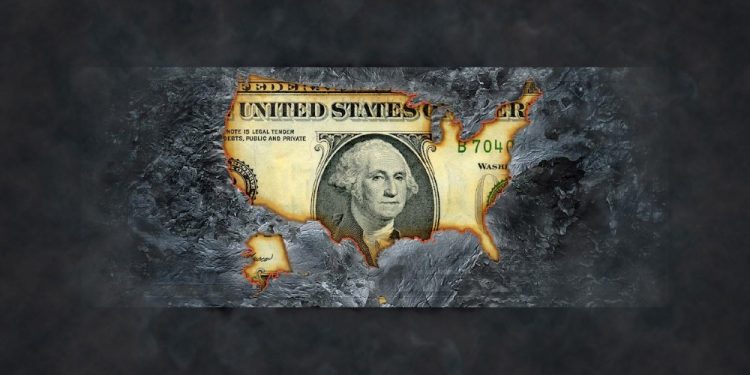(Natural News)—The economic situation in both the United States and the European Union (EU) has degraded so much in recent weeks that even the powers that be are admitting that the situation looks much uglier than the “experts” previously warned.
According to data from SWIFT, the global messaging service for cash transactions, use of the euro has collapsed over the past nine months. Its share of transactions dropped from 38 percent in January to a measly 23.2 percent at the end of August – this is the lowest level recorded in at least 12 years.
It is now being acknowledged that Europe is more than likely already in a recession. And based on the old standards of calculating a recession, the U.S. is likewise in a recession – and heading towards a great depression that will be much worse than the first one.
All gains made by the euro from December 2022 through July 2023 have now been lost. And since mid-July, the common currency has lost another eight percent against the dollar – and is likely only just getting started in terms of its continued decline.
(Related: Back in August, India and the United Arab Emirates [UAE] completed their first dollar-free sale of oil in rupees rather than in petrodollars.)
The global economy is grinding to a halt as inflation continues to soar
Based on the new standards, the U.S. is expected to “officially” enter a recession in 2024 as the effects of monetary tightening take their toll. Some believe that the dollar will hold roughly steady through the winter months before dropping off a cliff next year.
As poorly as the U.S. is doing right now economically, the Eurozone is reportedly doing much worse. There, growth momentum is declining at the most rapid pace, while the U.S. economy has seemingly magically continued to “hang in there.”
Factory job losses across Europe are increasing as new orders decline and business confidence deteriorates. In its 26-year history, the Eurozone HCOB PMI report has never seen this severe of a decline in new product orders across Europe.
The European car sector is struggling as well, and EU leaders have launched their own probe into illegal state subsidies in the Chinese car sector. It remains to be seen what will become of the trade relations between the EU and China moving forward.
“At the end of the day, we believe that the most likely scenario is a negotiated settlement that would either result in some protective measures and / or entails an agreement on Chinese investments in Europe in either the car or the battery sector,” reported Zero Hedge.
The European Commission says it will also assess the risks of four critical technologies: semiconductors, artificial intelligence, quantum technologies and biotechnologies such as vaccines and genome sequencing. The aim is to ensure that these technologies are not “being weaponized by countries not aligned with its values.”
For the first time since April, there has also been an acceleration in the rate of inflation both here and abroad. There have likewise been substantial increases in energy prices, particularly during the month of September.
“Some further tightening of monetary policy may be required to ensure that inflation returns to target in a reasonable timeframe, but that will continue to depend upon the data and the evolving assessment of risks,” reads a statement from Reserve Bank of Australia (RBA) head Michelle Bullock about the dire situation there.
All in all, the global economic climate is getting uglier and uglier as it nears falling off a cliff, never again to return to what it once was.
The end of Western dominance over world affairs is now in sight. Learn more at Collapse.news.
Sources for this article include:
It’s becoming increasingly clear that fiat currencies across the globe, including the U.S. Dollar, are under attack. Paper money is losing its value, translating into insane inflation and less value in our life’s savings.
Genesis Gold Group believes physical precious metals are an amazing option for those seeking to move their wealth or retirement to higher ground. Whether Central Bank Digital Currencies replace current fiat currencies or not, precious metals are poised to retain or even increase in value. This is why central banks and mega-asset managers like BlackRock are moving much of their holdings to precious metals.
As a Christian company, Genesis Gold Group has maintained a perfect 5 out of 5 rating with the Better Business Bureau. Their faith-driven values allow them to help Americans protect their life’s savings without the gimmicks used by most precious metals companies. Reach out to them today to see how they can streamline the rollover or transfer of your current and previous retirement accounts.




